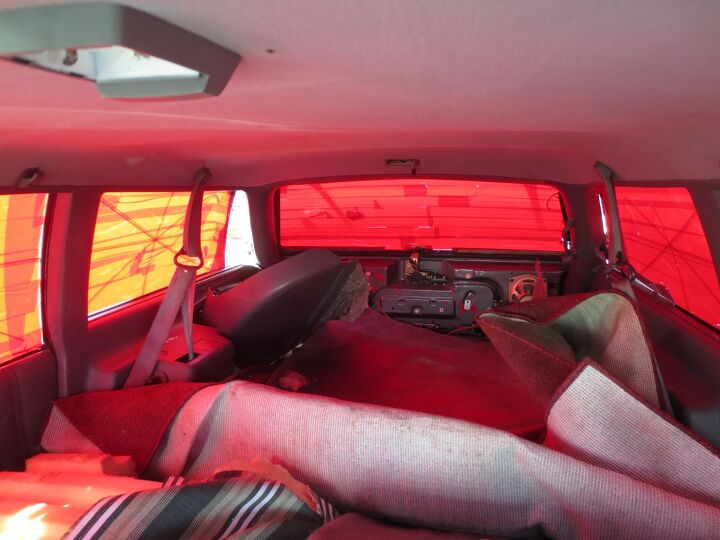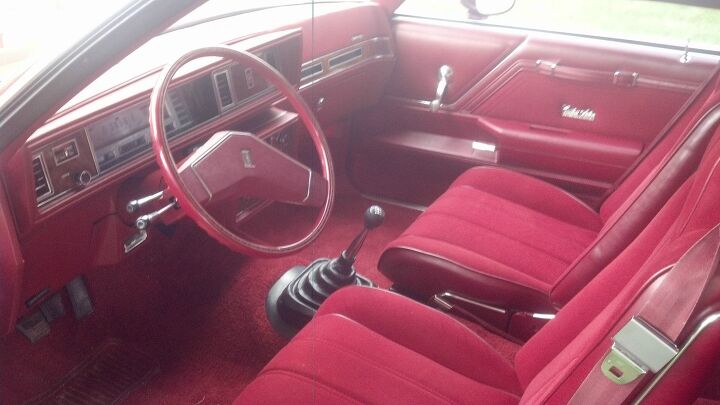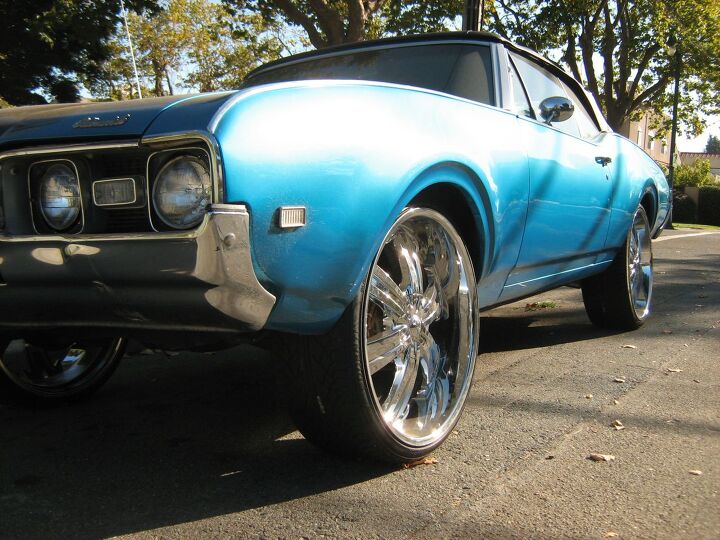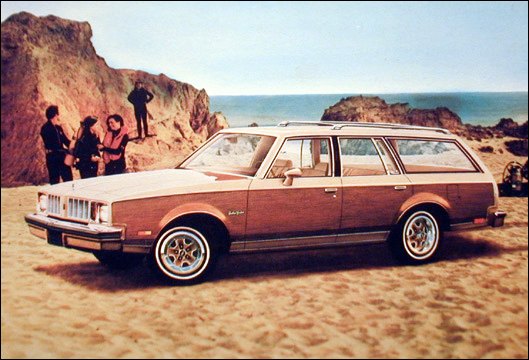#cutlass
Junkyard Find: 1989 Oldsmobile Cutlass Cruiser Hell Edition
Plenty of front-wheel-drive Cutlasses go to The Crusher without being photographed for this series, but here’s one with an interesting customization job that attracted my attention. Why didn’t GM ever make a wagon with a red-glass option?
Junkyard Find: 1974 Oldsmobile Cutlass Salon
The fourth-gen Olds Cutlass was one of the few bright spots for The General as the Malaise Era grew darker for Detroit. You could get T-tops, factory 8-track players, velour interiors in a wide range of bright colors, and who cared if engines were making less than one horse per two cubic inches? The Salon was the top-of-the-line Cutlass for ’74, with reclining bucket seats, radial tires, and other futuristic goodies. Here’s one that I spotted in a Denver self-service yard not long ago; nearly 40 years of personal luxury for this Olds.
This Is The Dawning Of The Age Of The Aeroback
Yes, yes, I know… it’s supposed to be the age of the Aerostar! Don’t be such a historical literalist! Go back to Curbside Classics, why don’t you?
No, seriously, stay here. Please. We’ll have snacks later. Possibly.
Right now, on eBay, an Aeroback of eye-watering rarity is being auctioned. It’s a 1978 Cutlass Salon. That’s not rare: the Cutlass was often the best-selling A-body. It’s a Cutlass Salon Brougham. That’s not rare: the economy wasn’t great back then and a lot of people downsized from Cadillacs into Cutlasses. However, according to the owner, who would have no possible reason to lie, “There were only 6558 of these cars built with the 260 V8 and only 170 of these had the T50 Borg Warner 5 speed transmission.”
Now we’re talking. But the question now becomes: Why was there ever an Aeroback in the first place?
Junkyard Find: 1979 Oldsmobile Cutlass Supreme Brougham
Now that we’ve looked at the corpse of a GM product that flopped in the American marketplace, let’s exhume an example of a GM product that sold like crazy: the Middle Malaise Era Olds Cutlass.
Junkyard Find: 1990 Oldsmobile Cutlass Calais International Series
In 1990, you could give your BMW salesman $24,650 and drive off the lot in a 325i coupe weighing 2,811 pounds and equipped with a 168-horsepower engine and 5-speed transmission… or you could hand $14,895 to your Oldsmobile salesman and drive off the lot in a Cutlass Calais International Series coupe weighing 2,823 pounds and equiped with a 160-horsepower engine and 5-speed transmission. Ten grand more for rear-wheel-drive, eight more horses, 12 fewer pounds, and a blue-and-white hood emblem? I had forgotten all about the Quad 4-powered Cutlass Calais International Series until I ran across this forlorn example in a California self-service wrecking yard last week.
Down On the Alameda Street: 1968 Oldsmobile Cutlass Convertible Donk
While in California to check out Billetproof Nor-Cal last weekend, I had the chance to visit The Island That Rust Forgot. It didn’t take long to find this ’67 Barracuda convertible and today’s find.
Junkyard Find: 1978 Oldsmobile Cutlass 442
Yes, GM kept making Cutlasses with 442 badging long after the end of the muscle car era. Between 1970 and 1978, the 442 lost about 400 pounds of curb weight and (at least) 205 horsepower; the top 442 engine in ’78 was a 160-horse Chevy 305 V8.
Darwin, Transplant Automakers, And The Invisible Hand of the 1978 Cutlass
It’s called “convergent evolution”, and it refers to cases in which two unrelated, or distantly related, animals evolve to similar shapes or capabilities due to the pressures of their environment. Examples can be found here, with the most interesting one being the “pronghorn antelope”. It really isn’t an antelope, you see. It turns out that when there is pressure in an environment, animals will eventually all adapt to their optimum form for that environment.
While there are many unforgiving environments around the world, from the Sahara to the Arctic Circle, few are as murderous as the American automobile market. It turns out that the aforementioned “optimum form” appeared some time ago, and everyone else has been evolving that way ever since..Don’t worry. You may not believe in evolution, let alone the Mitsubishi Evolution, but I will serve as your John Scopes in this auto-Darwinian voyage.




















Recent Comments